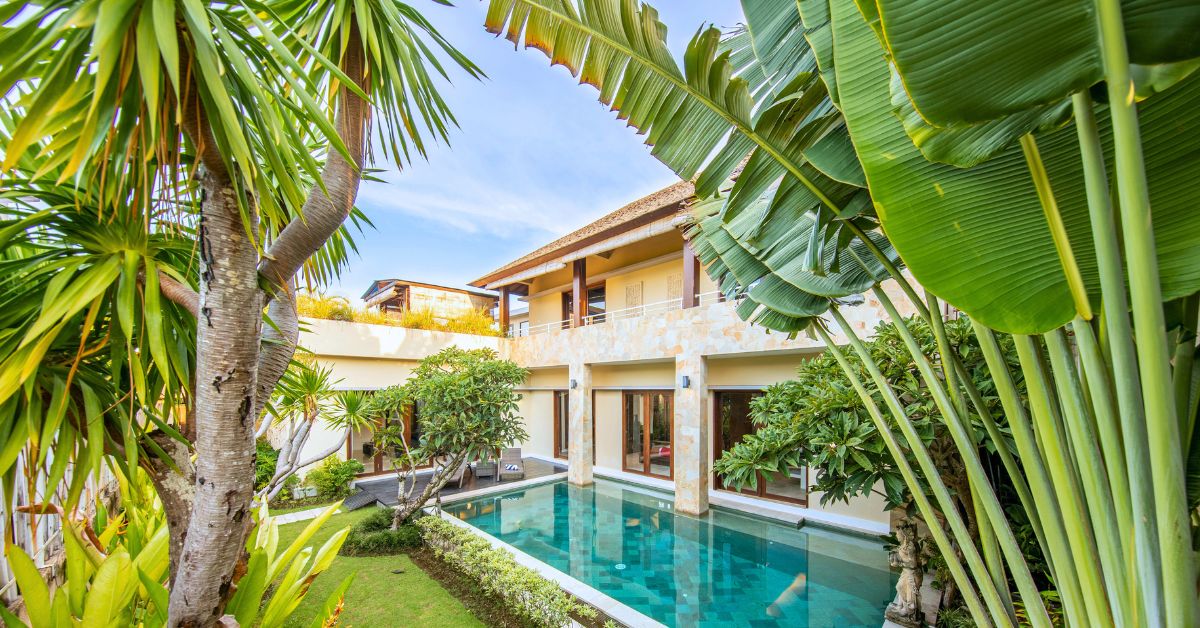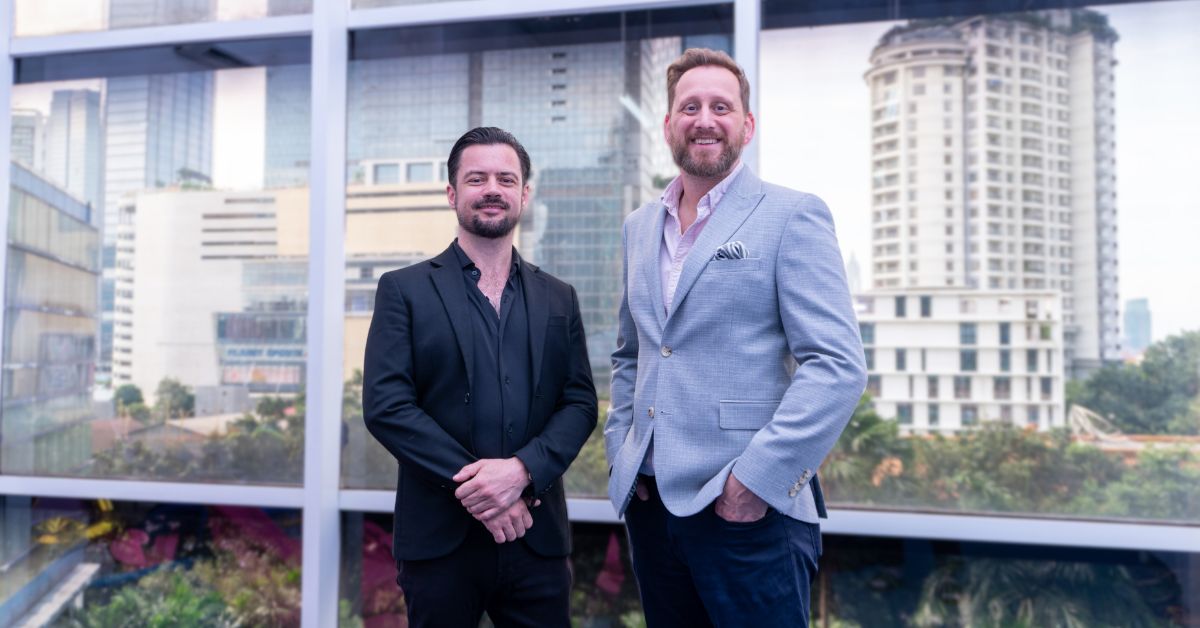KPR stands for Kredit Pemilikan Rumah, which essentially translates to Home Ownership Loan. It's a smart solution for those wanting to own a home without having to wait until they've saved the full amount. With a KPR, you can pay for your home in instalments over a set period, tailored to your financial capacity.
In this article, Lets Move Group will guide you through what KPR is, the process of applying for a mortgage, the terms and conditions, and even provide simulations of KPR instalment programs from various leading banks in Indonesia.
Highlights:
- Understanding the definition of Mortgage in Indonesia
- Get to know the benefits and functions of mortgages
- Understanding the Types of Mortgages and Their Application Requirements
- Knowing the costs incurred in the mortgage process
- Types of Mortgage Interest Rate
- How to Apply for a Mortgage (KPR)
What is KPR? Understanding Mortgage in Indonesia
KPR is a type of consumer credit specifically designed for purchasing or renovating a home. These Mortgage Application programs typically have a long repayment period (tenor) with varying interest rates on the instalments.
The tenor offered by banks providing Home Ownership Loan facilities ranges from 5 to 30 years. To be eligible, borrowers must meet certain terms and conditions set by the bank offering the KPR facility (the lender).
The amount of your monthly instalment will depend on the loan amount (plafon kredit) and the prevailing interest rate of the bank.
Understanding the Benefits and Advantages of KPR
A Home Ownership Loan (KPR) offers several significant advantages for individuals looking to own a home. Here are some of the key benefits:
- KPR allows you to by a house by paying a relatively smaller down payment (DP) compared to the total property price. This is particularly helpful for those who haven't yet accumulated a large amount of savings for a full home purchase.
- The KPR process involves the bank checking the legal standing of the property. This provides you with reassurance that the legal status of the home you are buying is clear and secure.
- KPR offers flexible repayment terms, allowing you to adjust the size of your monthly instalments to suit your financial capabilities.
- By buying a house through KPR, you protect yourself from potential property price increases. With a KPR, you can secure instalment payments that tend to remain stable, even as market property prices fluctuate.
6 Uses for KPR Services
KPR for Buying a Home
This is probably the most common reason people look into KPR. It's the way many individuals can get onto the property ladder, allowing them to purchase their own home, whether it's a brand new build or a pre-owned property, by spreading the cost through manageable monthly payments over an agreed period.
KPR for Home Renovations
Beyond simply buying a place, KPR can also be a handy tool if you're looking to give your existing home a bit of a spruce up or carry out some much-needed improvements. It's a practical option for those wanting to enhance the quality of their living space.
KPR for Buying Land
Interestingly, some financial institutions also offer KPR for purchasing land. This opens up opportunities for individuals or developers who want to acquire a plot of land with the intention of building a house or other property in the future.
KPR for Commercial Properties (Ruko)
KPR isn't just for residential properties. You can also use it to finance the purchase of a rumah toko (often referred to as a shop-house or commercial unit), which many people use for business purposes or as an investment.
KPR for Buying Apartments
With the growing popularity of apartment living, KPR has become a popular route for people to acquire their own apartment unit.
KPR take over
Now, KPR Take Over is a bit different. This is the process of moving your existing KPR from one bank to another. People often do this to try and secure a lower interest rate or to benefit from more favourable credit terms offered by a different lender.
Types of KPR Mortgages
Conventional Mortgage (Non-Subsidised KPR)
A conventional mortgage is the most commonly offered KPR by banks in Indonesia.
- The system is based on interest rates set by the bank.
- Interest rates can be fixed, floating, or a combination of both.
- Typically, a conventional KPR has more flexible requirements than a subsidised KPR, but the interest rates may also be higher.
Sharia Mortgage (KPR Syariah)
Some banks offer Sharia KPR, a mortgage product based on Islamic financial principles. Sharia KPR does not use an interest-based system but instead applies a profit-sharing model or a pre-agreed margin.
Common contracts include Murabaha (cost-plus financing) and Musharakah Mutanaqisah (diminishing partnership).
One of the key benefits of a Sharia mortgage is the certainty in repayments, as the profit margin is determined at the beginning.
Subsidised Mortgage (FLPP KPR)
A subsidised mortgage, also known as FLPP KPR, is a Housing Finance Liquidity Facility provided by the government to help eligible buyers purchase subsidised homes through an instalment scheme.
This scheme is available to low-income earners looking to purchase their first home.
Subsidised KPR offers a low, fixed interest rate and affordable repayments, but it typically has stricter eligibility criteria compared to a conventional KPR.
Mortgage Take Over
A KPR Take Over refers to the process of transferring an existing mortgage from one bank to another.
This is usually done to secure a lower interest rate or more affordable repayments. The application process for a KPR Take Over involves a property re-evaluation and requires approval from both banks.
Mortgage Refinancing (KPR Refinancing)
KPR Refinancing is the process of applying for a new mortgage using an already-owned property as collateral. Homeowners may choose mortgage refinancing to access additional funds for other financial needs or to secure a lower interest rate.
Unlike a KPR Take Over, refinancing does not involve switching to a different bank.
In-House Mortgage (KPR In-House)
An in-house mortgage, or KPR In-House, is a financing scheme provided directly by property developers.
The application process for a KPR In-House is generally simpler and faster compared to a bank mortgage.
However, interest rates and loan terms for in-house KPR are often less competitive than those offered by banks.
Mortgage Requirements
While each bank has its own policies and conditions, there are several general requirements that typically apply when applying for a mortgage (KPR). These requirements are divided into two main categories: administrative requirements and documentary requirements.
If you are planning to apply for a mortgage (KPR) to purchase a home, here are the conditions you need to meet:
Administrative Requirements
- The applicant must be an Indonesian citizen (WNI).
- The applicant must have either a fixed or non-fixed income with a minimum employment period of one year.
- The applicant must be at least 21 years old and no older than 65 years old at the time of application.
Additional Requirements for a Subsidized Mortgage (KPR Subsidi):
- The maximum income limit is IDR 6 million per month for single applicants and IDR 8 million per month for married applicants.
- For Papua and West Papua, the income limit is IDR 7.5 million per month for single applicants and IDR 10 million per month for married applicants.
- The applicant and their spouse (if applicable) must not own a house prior to application.
- The applicant must not have previously received government housing subsidies.
Required Documents (Syarat Berkas)
Below are the documents that need to be prepared when applying for a mortgage (KPR):
Personal Identification:
- Photocopy of the applicant’s National ID card (KTP).
- Photocopy of the spouse’s National ID card (if married).
- Photocopy of the Family Card (Kartu Keluarga - KK).
Marital Status:
- Photocopy of the marriage certificate or divorce certificate (if applicable).
Tax Documents:
- Photocopy of the applicant’s Taxpayer Identification Number (NPWP).
Proof of Income:
- Salary slip or income statement for at least the past year.
- Photocopy of bank statements for the last 3–6 months.
Business Documents (for self-employed applicants):
- Photocopy of the Business Licence (SIUP).
- Photocopy of the Company Deed of Establishment.
- Photocopy of bank statements or savings account transactions for the last 6 months.
- Original declaration letter regarding property ownership credit.
Other Supporting Documents:
- Recommendation letter from the employer (if required).
- Notarial deed of asset separation (if required).
Important NoteThe terms and conditions above may be subject to change at any time in accordance with the policies of the bank or mortgage provider. For the most up-to-date and detailed information, it is recommended to contact the relevant bank directly or to consult with the professional team at Lets Move Group. As a trusted partner in the property and real estate sector in Indonesia, Lets Move Group is ready to assist you in understanding the mortgage application process, preparing your documents, and finding a property that aligns with your needs and budget. |
Mortgage Costs
espite the convenience offered by a mortgage (KPR), borrowers must consider several types of costs incurred when applying for a mortgage with a bank or other financial institutions.
In addition to the down payment and monthly instalments, there are several additional costs to account for during the mortgage application process. While these expenses are not as high as purchasing a property outright, they can still be significant, making it crucial to prepare for them in advance.
Here are the common costs incurred when applying for a mortgage (KPR):
- Down Payment: 10–20% of the property price.
- Booking Fee: 1–5% of the property price.
- Provision (Bank Fee) and Administration Fee: 1% of the mortgage limit.
- Notary Fees: 2–4% of the mortgage limit.
- Deed of Mortgage Rights (APHT) Fee: 0.25% of 125% of the mortgage limit.
- Land and Building Acquisition Tax (BPHTB): 5% of the selling price minus the Non-Taxable Object Acquisition Value (NPOPTKP).
- Property Valuation (Appraisal) Fee: IDR 500,000 to IDR 3,000,000.
Additionally, there is an insurance fee typically required at the time of the mortgage agreement (akad KPR). The cost of life and property insurance varies depending on the insurer’s assessment of the property’s location and condition.
Mortgage Calculator
Use the Lets Move Group mortgage calculator to see how much your potential dream home could cost you!
Types of Mortgage Interest Rate
Fixed Interest Rate
A fixed interest rate remains unchanged for a predetermined period, as agreed in the mortgage contract. Typically, this fixed rate applies for 1–5 years, depending on the bank’s policy.
Advantages:
- Ensures stable monthly repayments during the fixed period.
- Ideal for borrowers who prefer short-term financial stability.
Disadvantages:
- Once the fixed period ends, the interest rate switches to a floating rate, which may be higher or lower depending on market conditions.
Floating Interest Rate
A floating interest rate fluctuates according to market conditions and bank policies. These changes often follow benchmark rates such as Bank Indonesia Rate (BI Rate) or international interest rates.
Advantages:
- If benchmark interest rates decline, borrowers may benefit from lower monthly repayments.
- Suitable for those comfortable with payment fluctuations.
Disadvantages:
- Monthly repayments are unpredictable, as interest rates may increase or decrease.
- Risk of higher payments if market interest rates rise.
Updated Mortgage Interest Rates in Indonesia (2025)
For reference, here are the latest mortgage (KPR) interest rates from major banks in Indonesia as of 2025.
Check the latest bank interest rate updates here.
How to Apply for a Mortgage (KPR)
Once all mortgage requirements are met, you can proceed with your mortgage (KPR) application.
Lets Move Group (LMG), as a trusted property consultant in Indonesia, is ready to guide you through the process smoothly and efficiently.
Step 1: Find Your Dream Home
Search for your ideal property offline or online. Besides offering mortgage consultation, Lets Move Group provides a wide selection of properties in Jakarta, Bali, and across Indonesia, including houses, apartments, and luxury villas. Browse our listings at www.theletsmovegroup.com.
Step 2: Choose a Mortgage Provider
Once you find the right property, select the best mortgage provider. Lets Move Group can assist you in comparing various mortgage (KPR) options from our partner banks to secure the best interest rates and loan terms.
Step 3: Follow the Mortgage Application Process
With Lets Move Group’s assistance, here are the steps to apply for a mortgage (KPR):
- Kunjungi Bank Penyedia KPR
Tim LMG akan mendampingi anda untuk proses mediasi ke bank pilihan dan memastikan semua dokumen siap. - Siapkan dan Serahkan Berkas Persyaratan
Bawa seluruh dokumen yang diperlukan dan isi formulir permohonan KPR. - Tunggu Proses Analisis Kredit
Bank akan melakukan penilaian kelayakan kredit dan survei properti. - Terima Surat Penegasan Kredit (SPK)
Jika pengajuan disetujui, bank akan mengeluarkan SPK yang berisi rincian pinjaman, tenor, dan suku bunga. - Lakukan Akad KPR
Akad KPR dilakukan di hadapan notaris, perwakilan bank, dan penjual properti. LMG akan membantu mengatur jadwal dan memastikan kelancaran proses akad. - Mortgage Disbursement Once completed, the mortgage funds will be transferred to the property seller, officially making you the homeowner.
Key Factors for Mortgage Approval
Even if all requirements are met, not all mortgage applications are approved. To improve your chances, it is essential to understand the key factors considered by banks.
As a trusted property partner, Lets Move Group (LMG) is here to help you prepare effectively. Here are some important criteria and tips to enhance your mortgage approval chances:
Good Credit History
Banks will check your credit history via SLIK OJK (Financial Information Service System by OJK). Avoid any past loan defaults or blacklisting, as a clean credit history is crucial for approval.
Stable Income and Affordable Repayment Allocation
Banks typically require mortgage payments to not exceed 30% of your monthly income. Lets Move Group can help assess your financial capacity before applying.
Adequate Down Payment
A larger down payment reduces risk for the bank. Ensure you meet the bank’s minimum down payment requirement or contribute more if possible.
Low Existing Debt Obligations
Your debt-to-income ratio is a key factor. High outstanding debts can lower your chances of mortgage approval. Consider clearing other debts before applying.
Complete Documentation
Ensure all required documents are submitted correctly, including payslips, tax ID (NPWP), identity card (KTP), and supporting documents. LMG can assist in ensuring document readiness.
Property Condition and Location
Banks will assess the property’s physical condition, accessibility, and environmental risks. It should have a solid structure, proper road access, and not be in high-risk areas (e.g., flood zones). Lets Move Group can help select properties that meet bank criteria.
Apply for a Mortgage with Lets Move Group!
Our professional consultants at Lets Move Group are ready to help you secure a mortgage (KPR) plan with the best interest rates and repayment terms suited to your needs. Get in touch with our consultants today and make your dream home a reality!!












